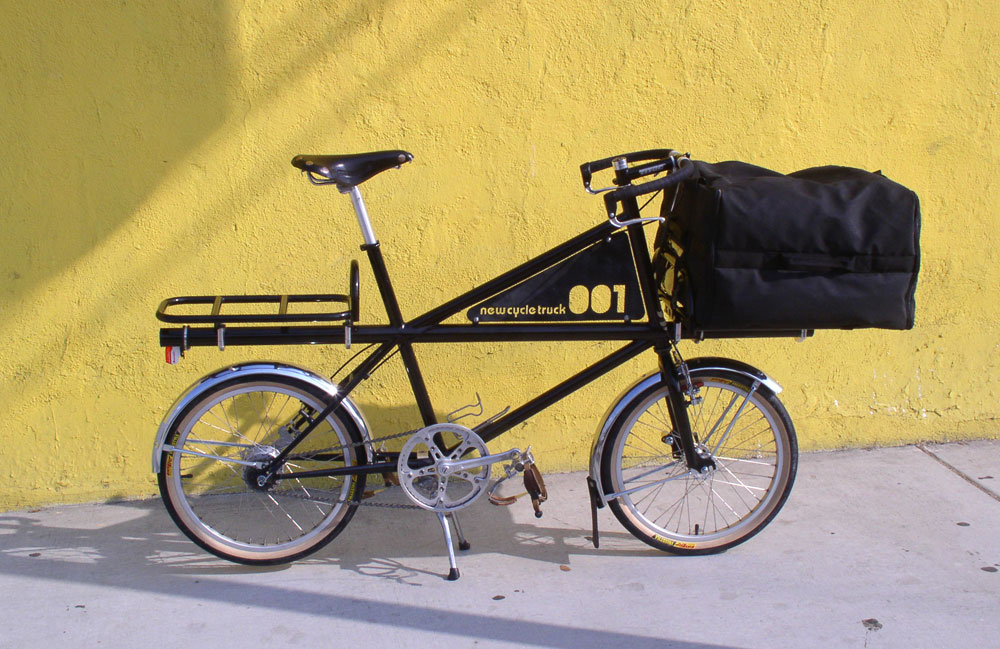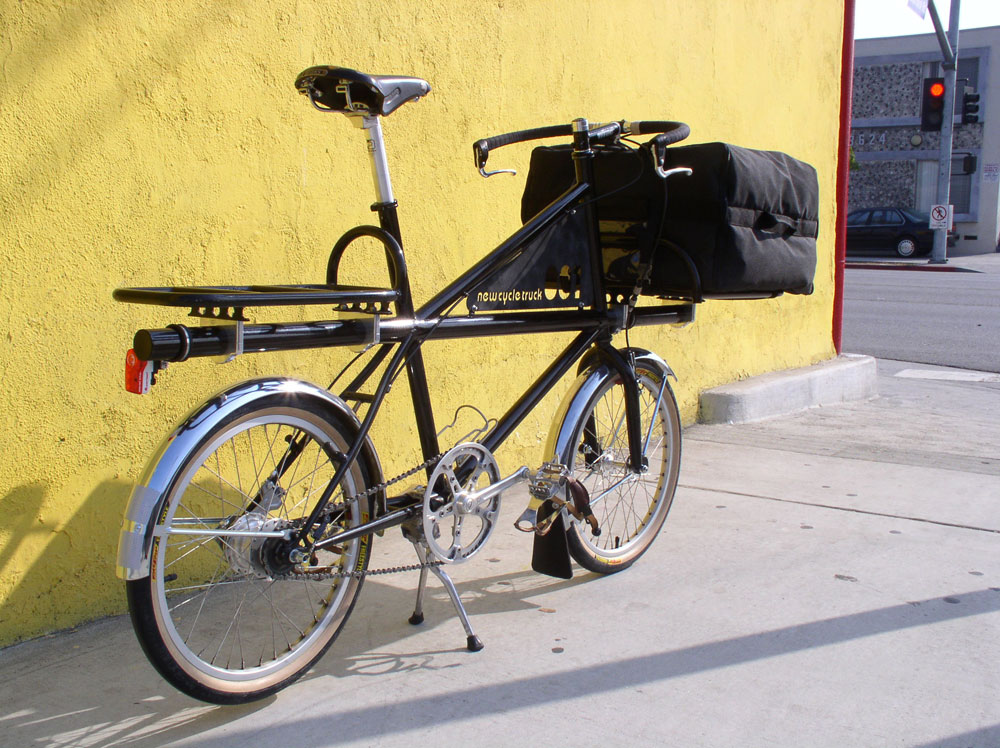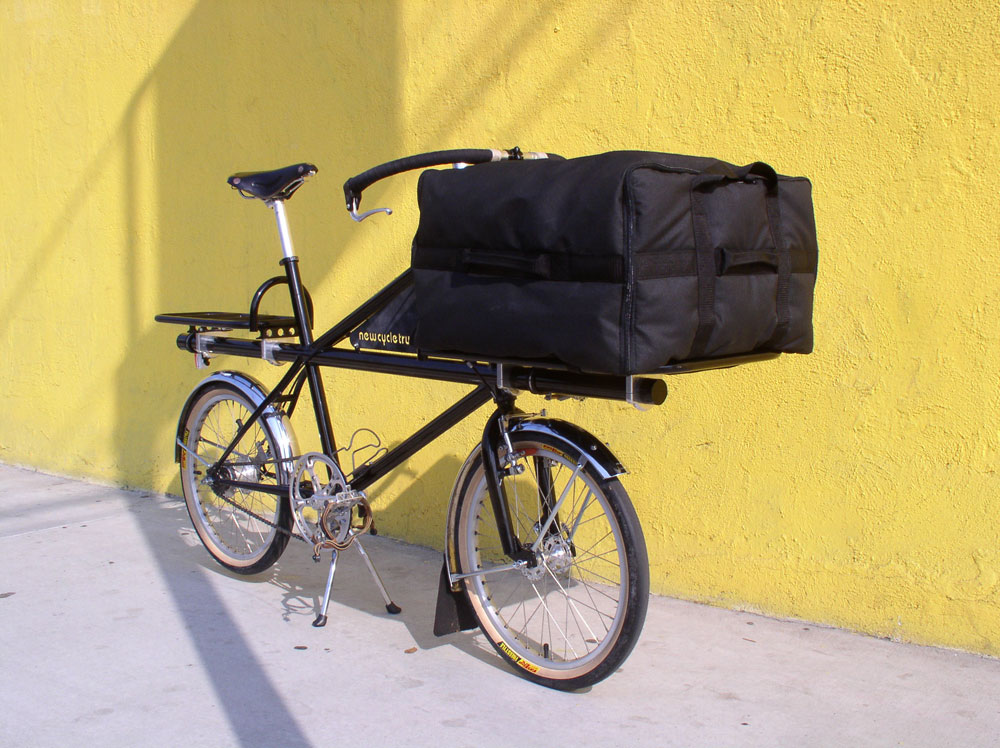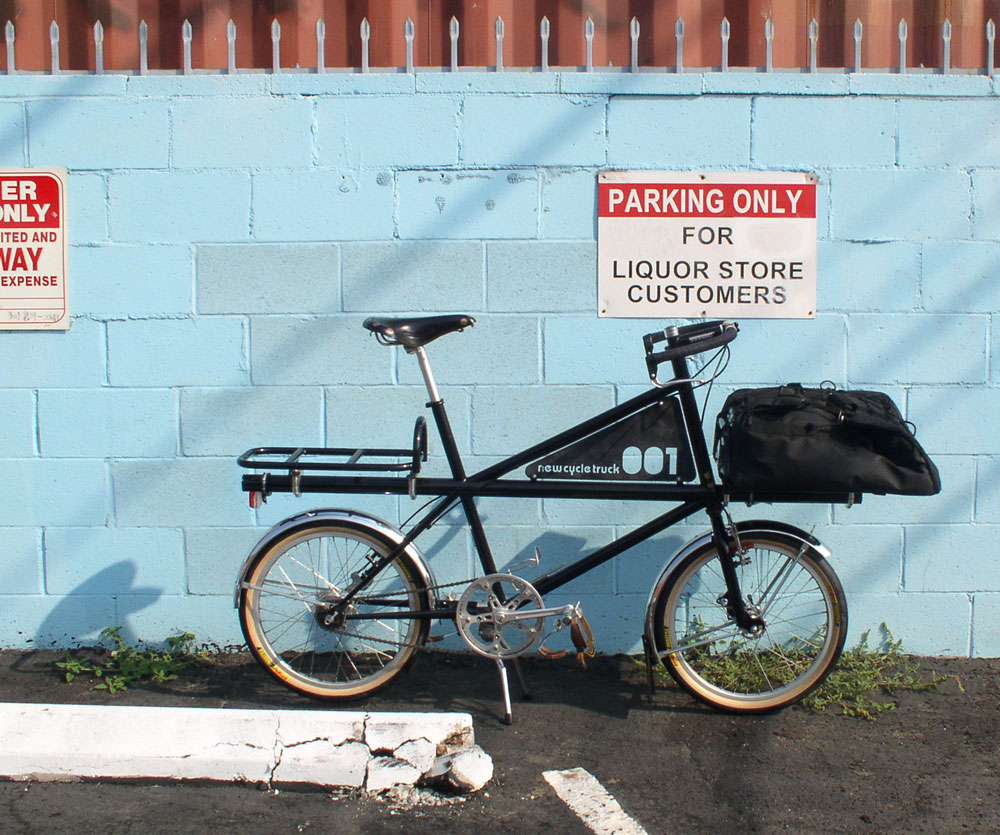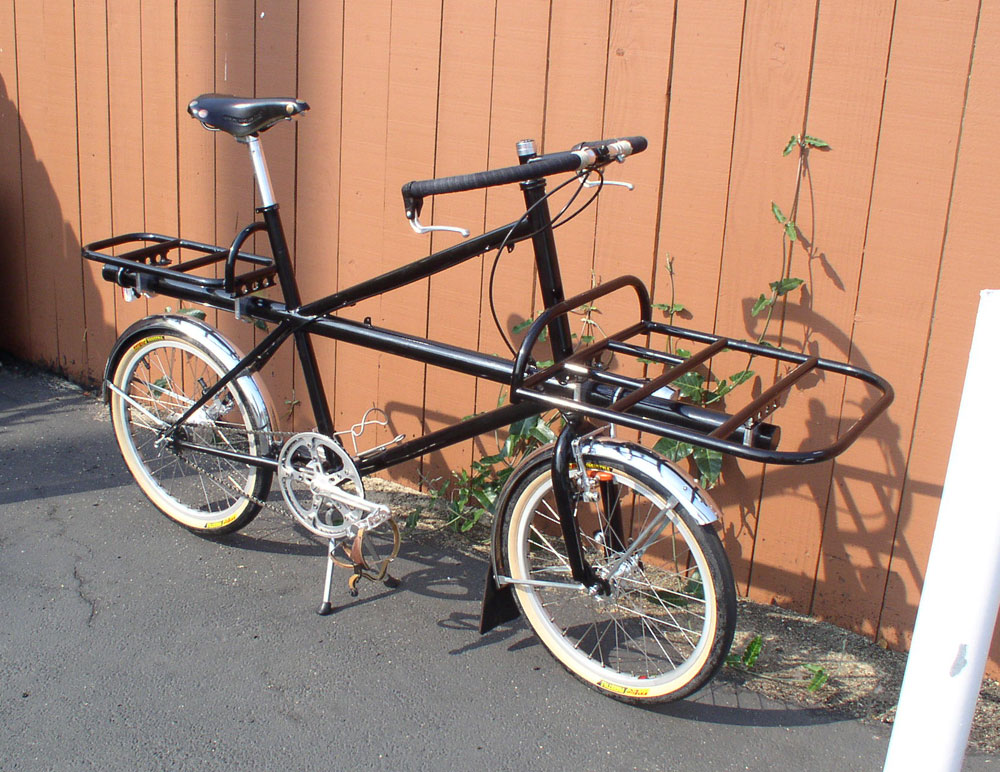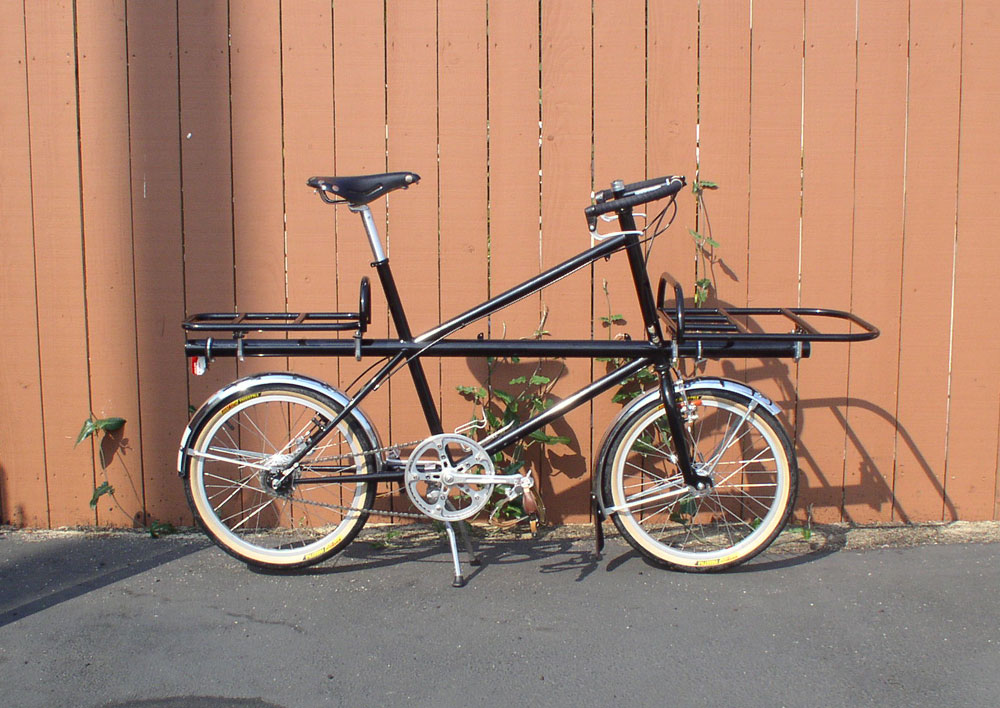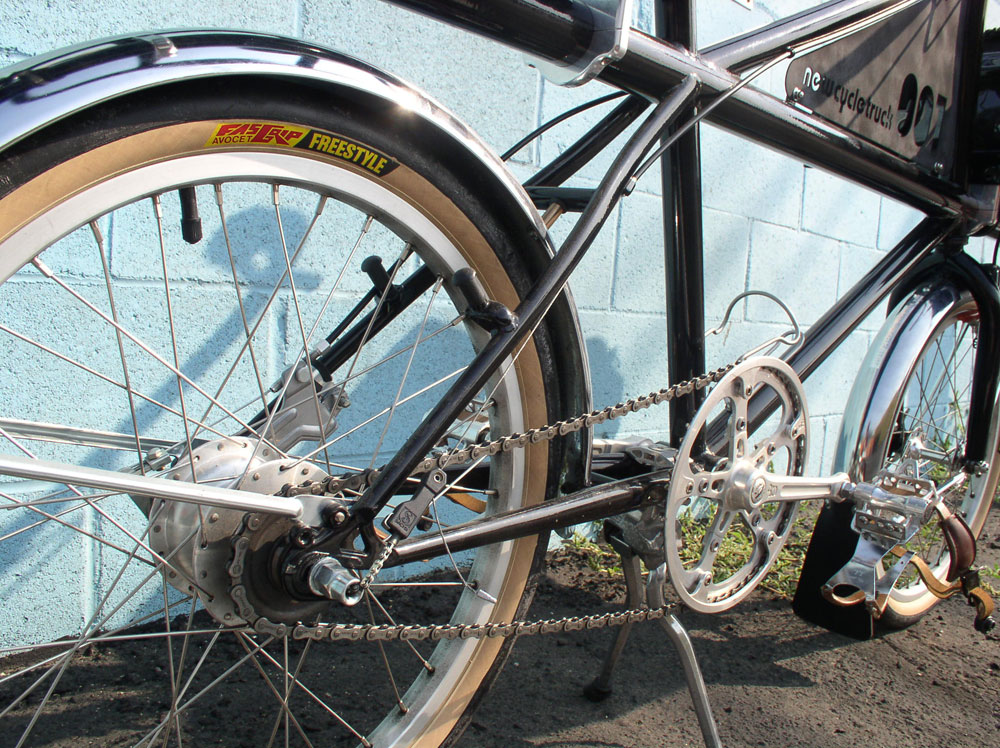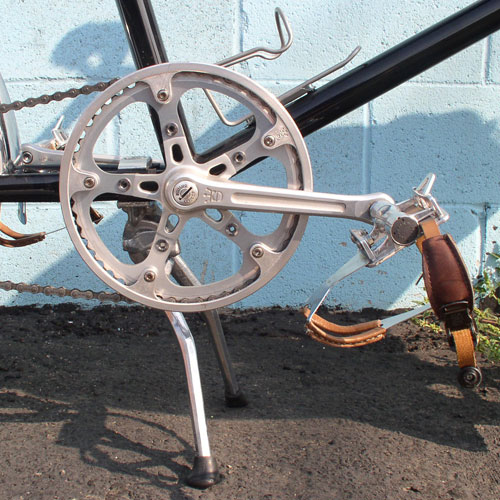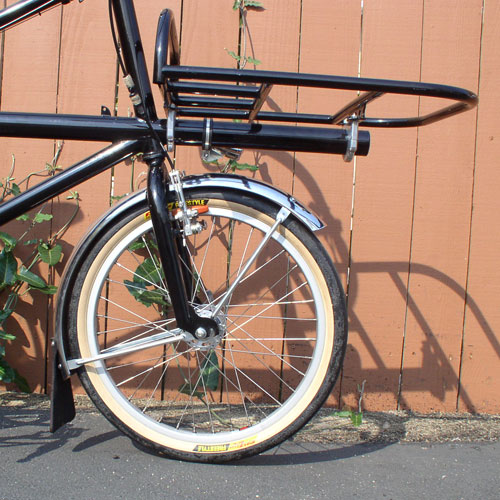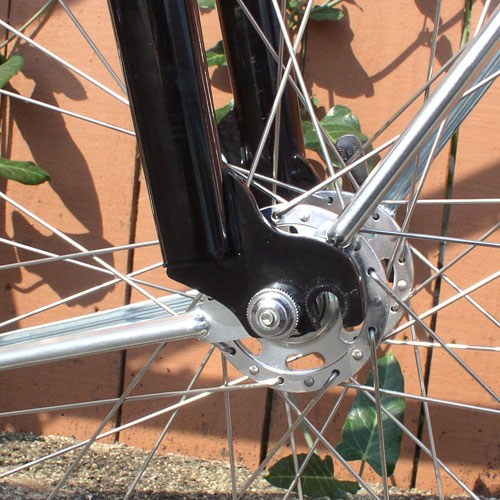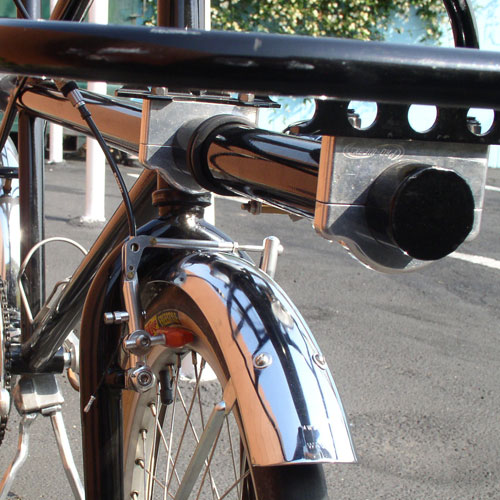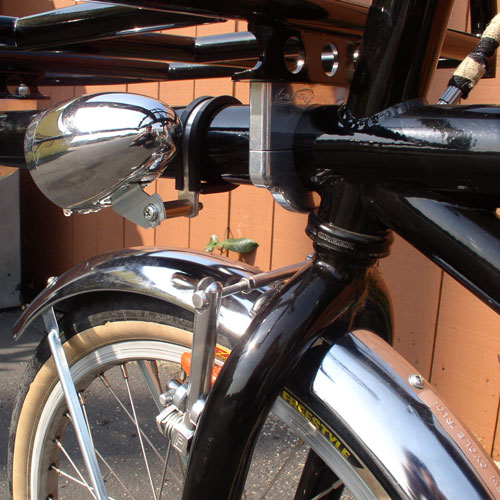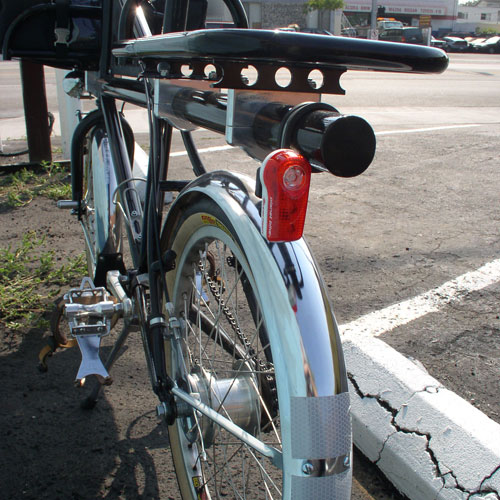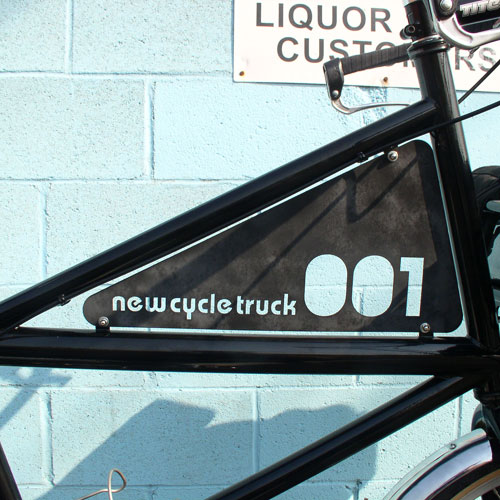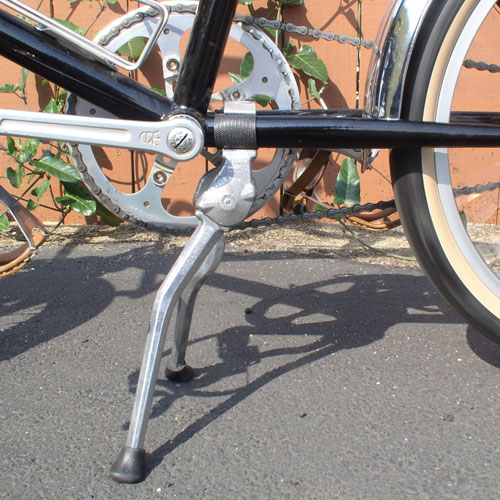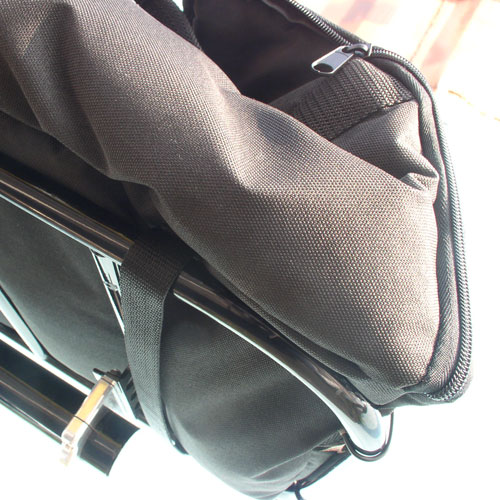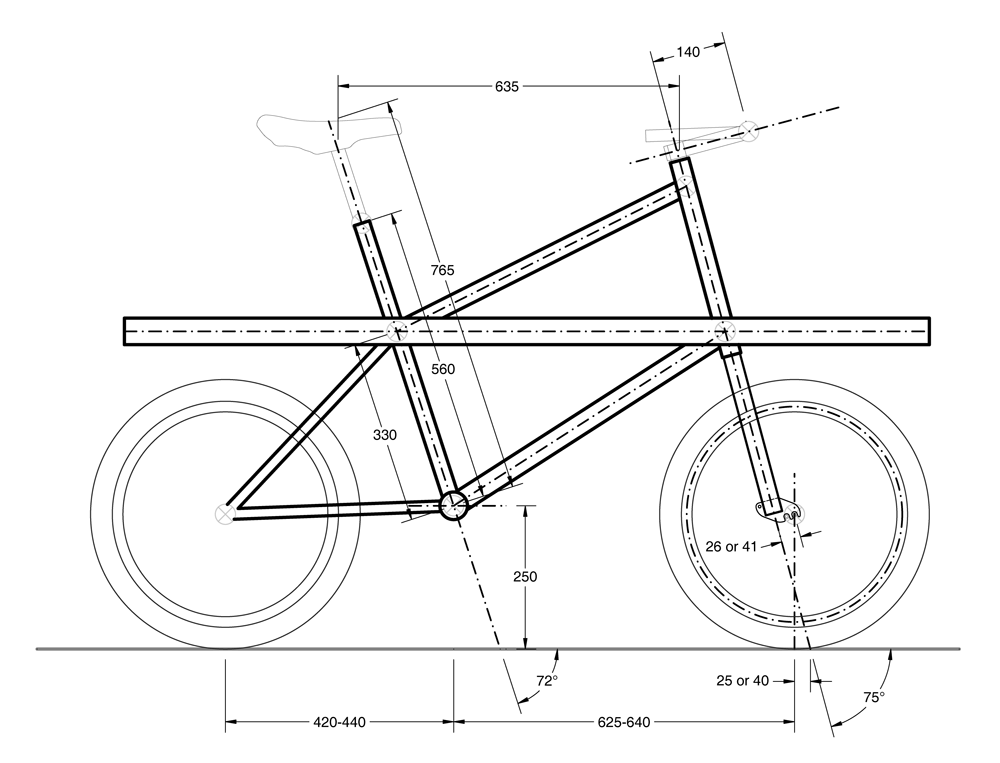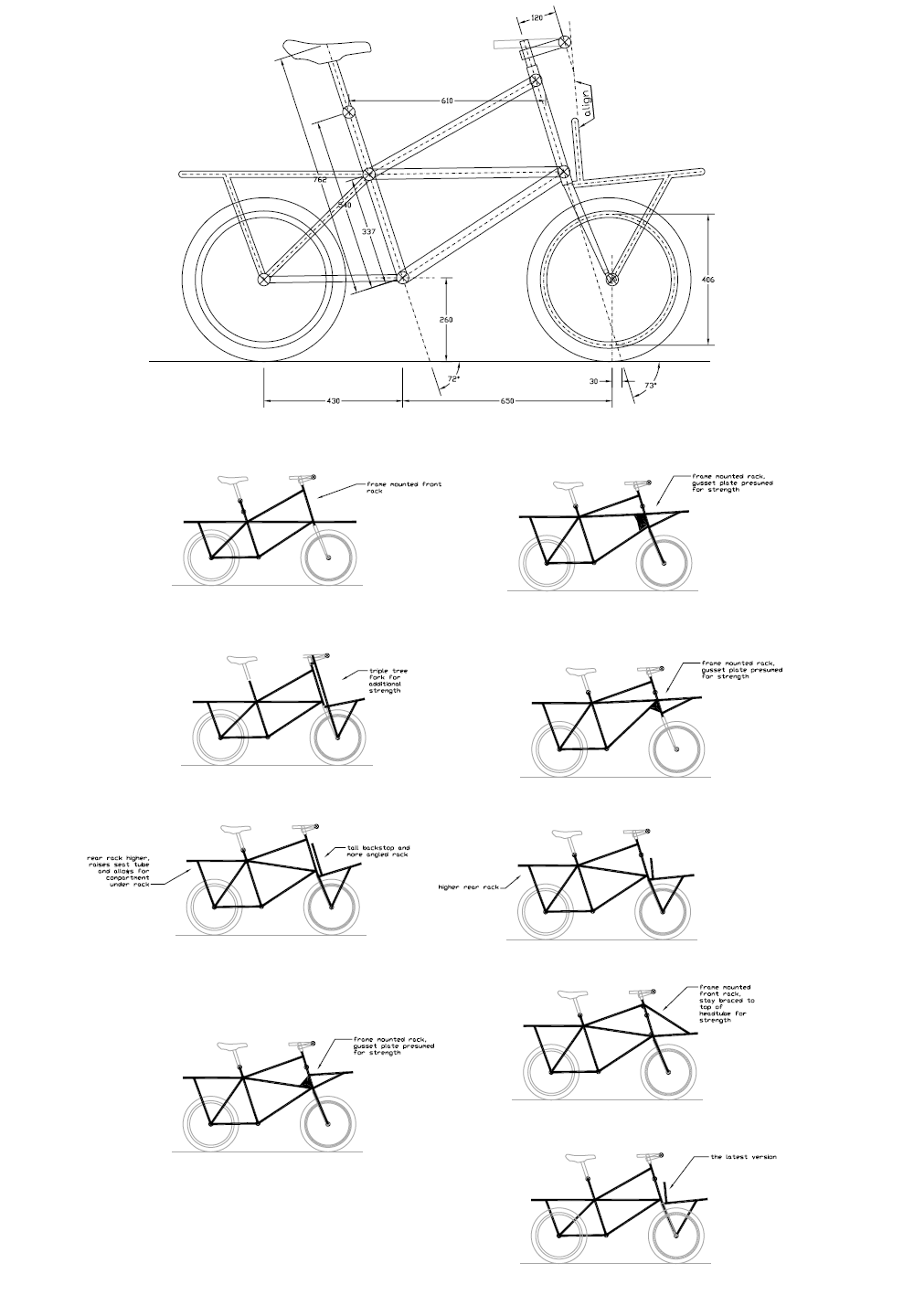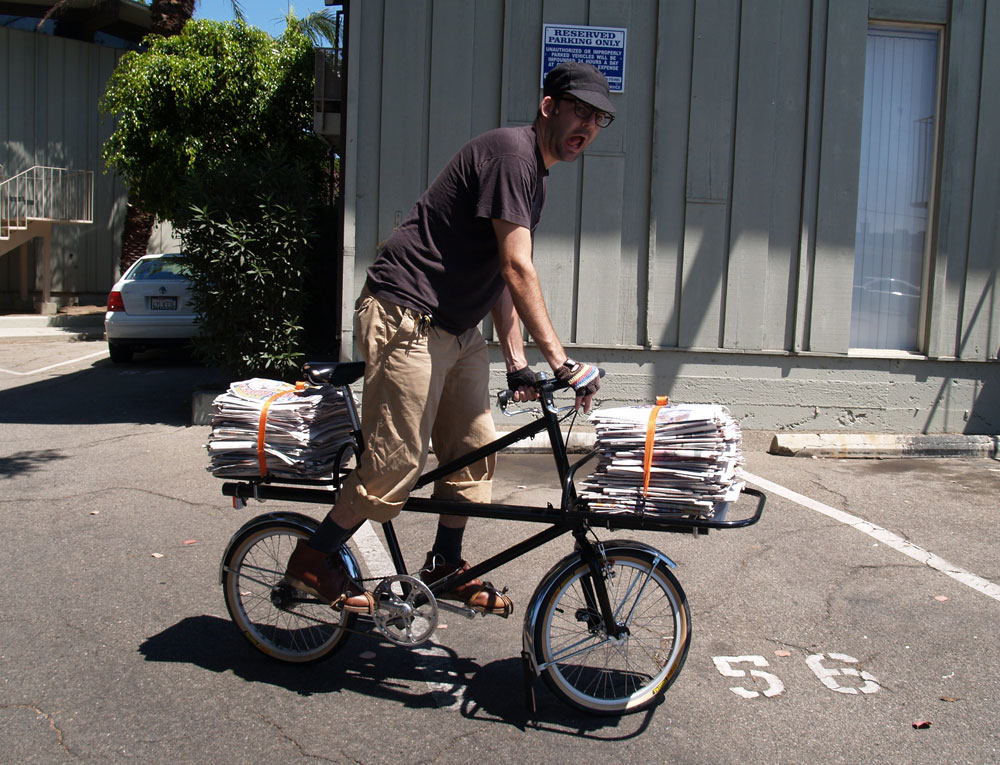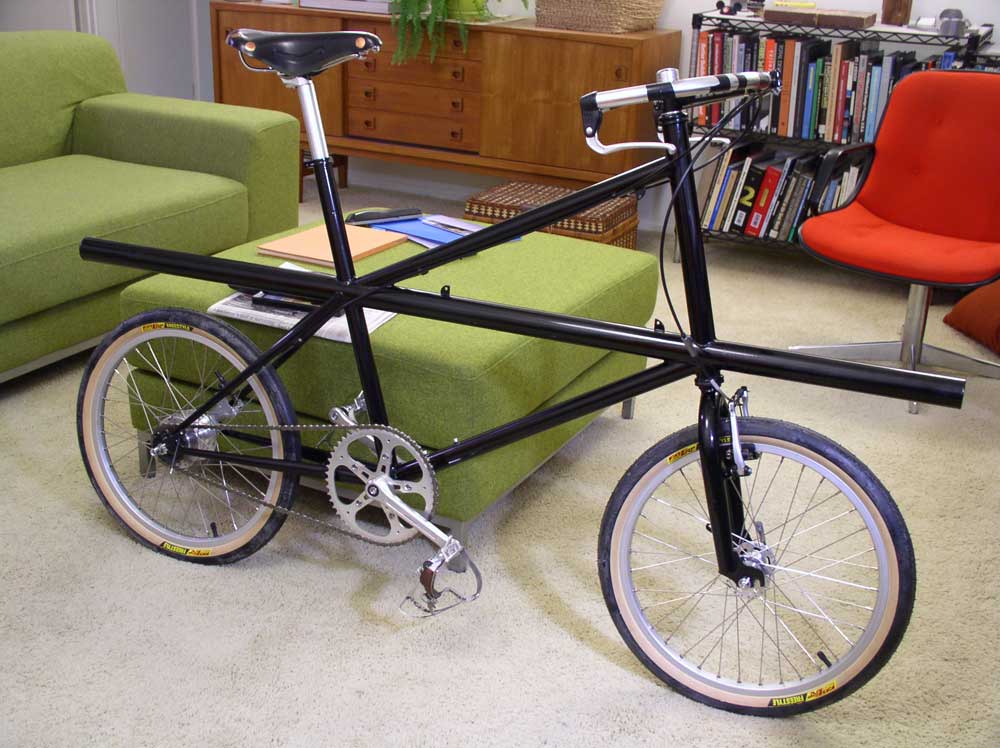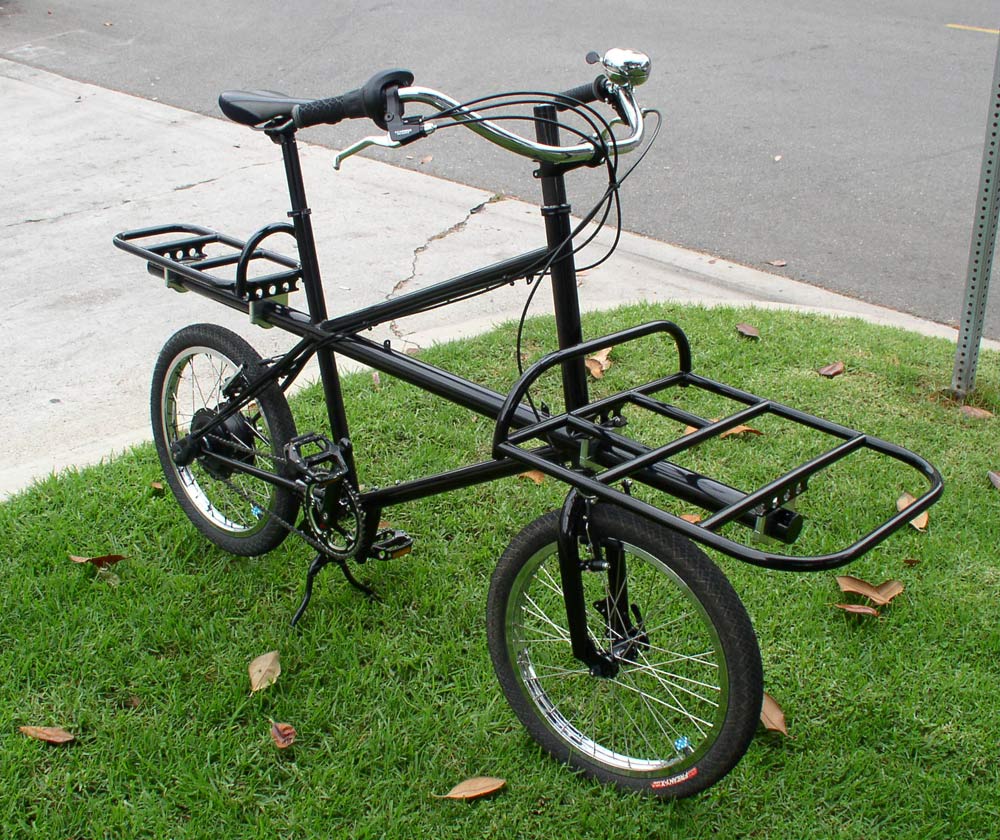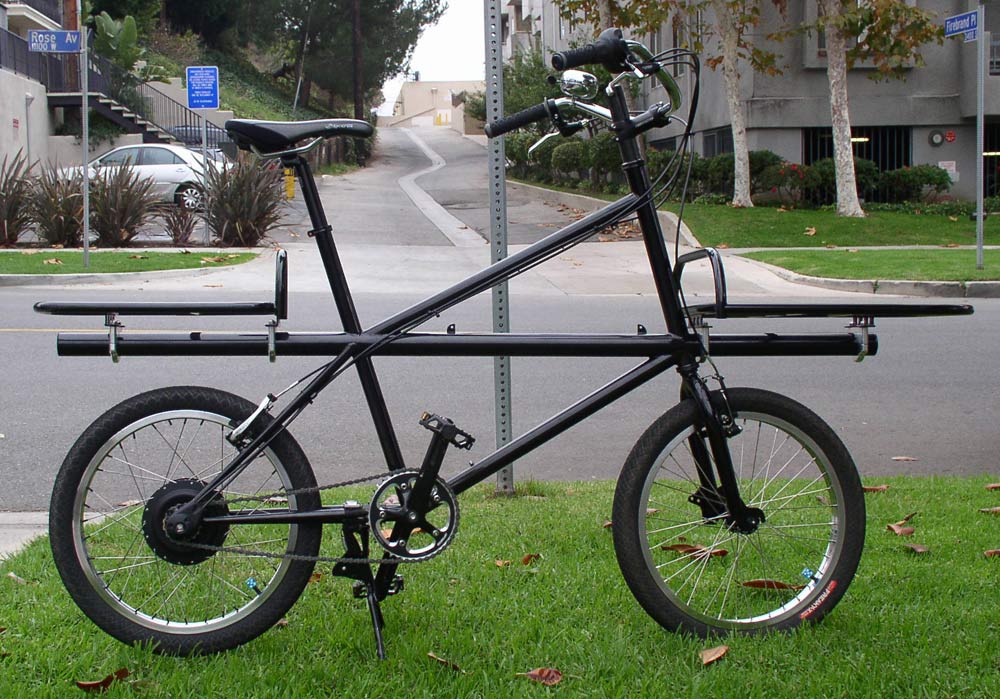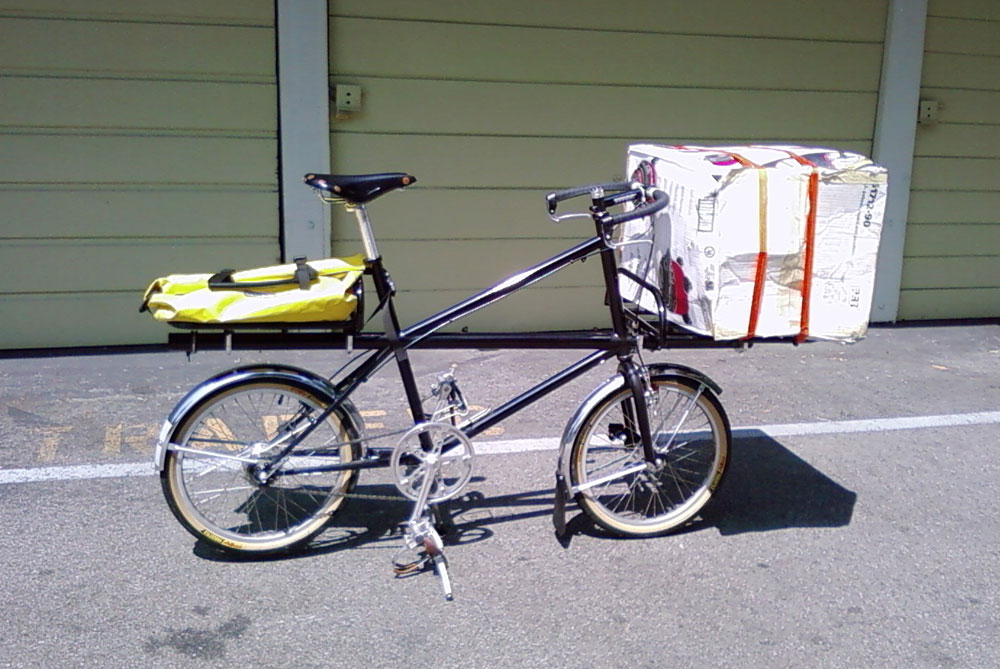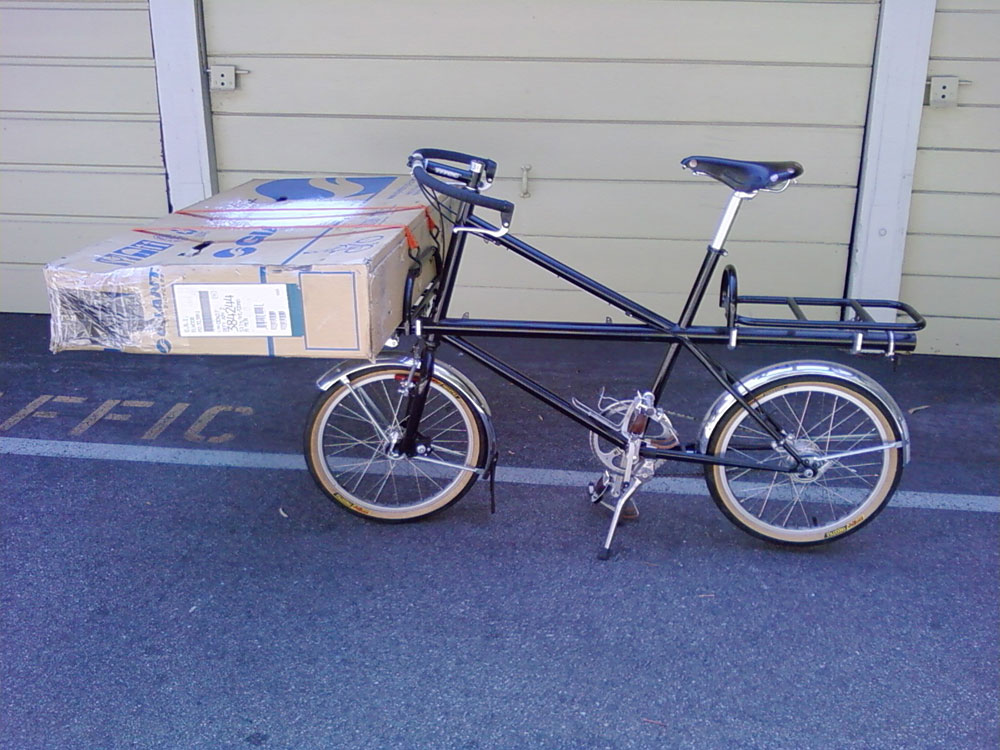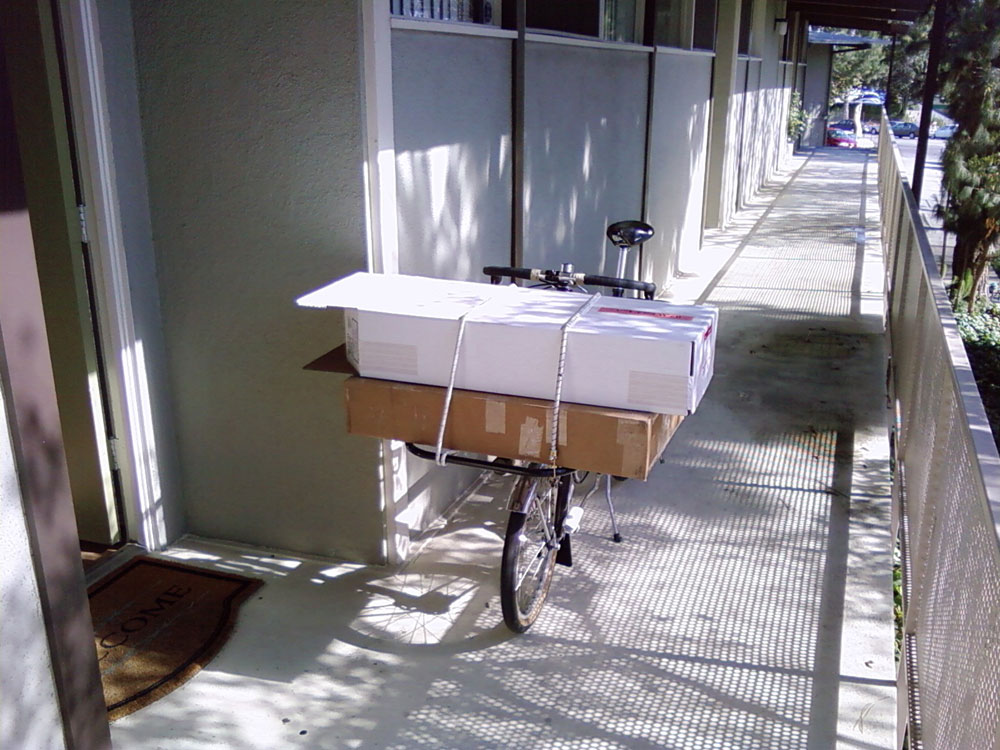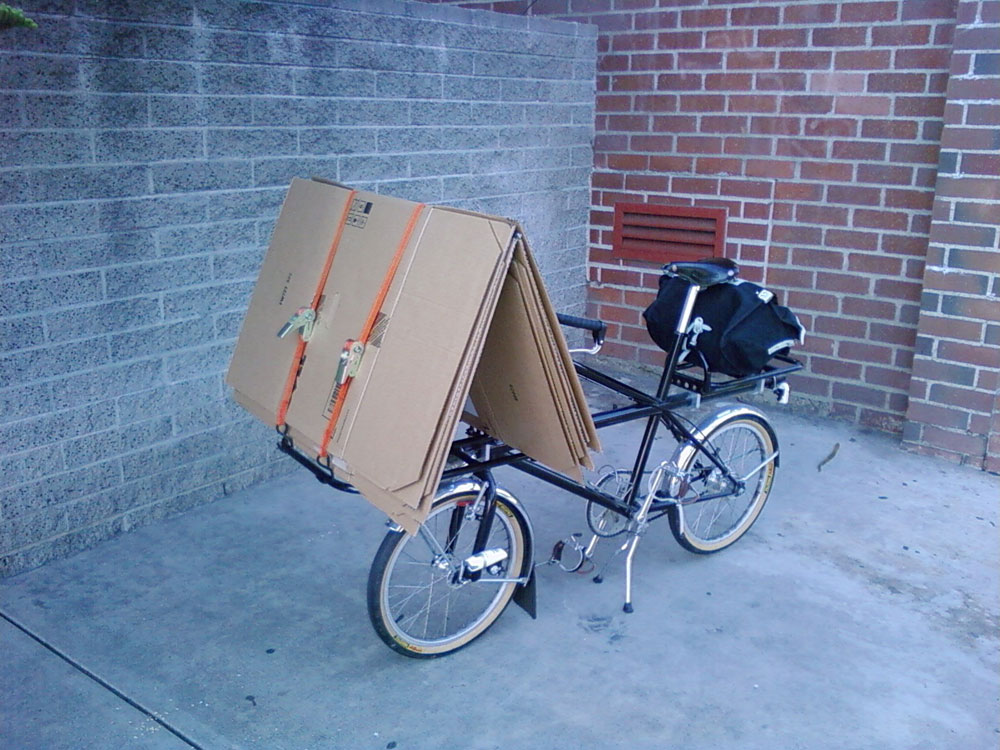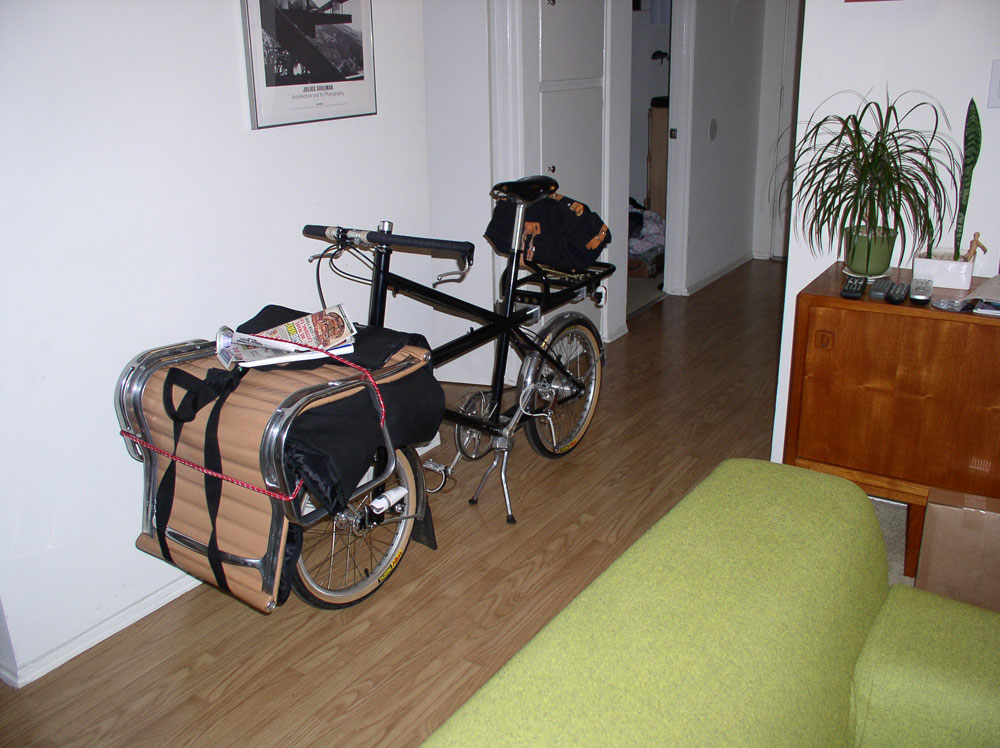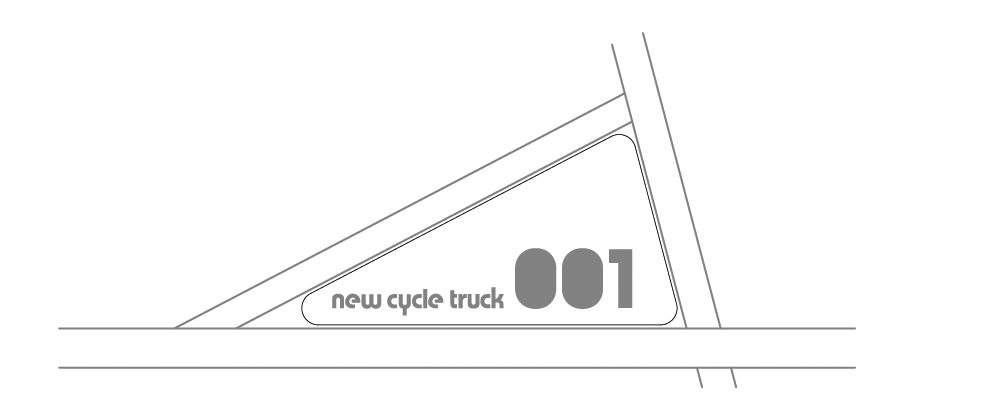 James Black's New Cycle Truck, a lightweight cargo bicycle Custom-built in 2007 by David Wilson ( http://davidwilsonindustries.com/ ) page updated July 6, 2008 - the mark-II build is finally complete. page updated August 24, 2008 - added comments regarding shimmy. page updated November 27, 2008 - a few links added. page updated December 26, 2009 - photos of bike carrying large loads, at end of page. link to James Black homepage ( http://james.architectureburger.com/ ) contact James Black: cycletruck at architectureburger.com link to pages about Alex Wetmore's self-built Cycle Truck, which shares a lot in common with mine link to Cyclofiend's "Working Bikes" gallery link to the Kemper Lorri webpage, a mass-produced German cargo bike with a similar design to my Cycle Truck link to the "Binbike" built for himself by Moz, another compact cargo bike in the cycle truck family link to an Instructables page showing how to convert a BMX bike elegantly into a cycle truck, as implemented in Haiti link to Tarik Saleh's review of the New Cycle Truck on his Moscaline blog link to Mat Honan's "Why You Should Be on a Cargo Bike" on Gizmodo General Images: With prototype signboard and large delivery bag: With giant delivery bag folded down: Component List: frame, fork and racks: custom by David Wilson/David Wilson Industries Closer Views: The drivetrain: Nitto Promenade handlebar, reverse brake levers and Sachs "Bendix" Torpedo trigger shifter. Cateye tape secured with hemp twine whipping: Sugino crankset, chainring and chainguard, and MKS GR-9 platform pedals. Vintage Cannondale toe straps are delaminating: Front fender line is not perfect, but meets my standards. The Wald stays go over the axle of the quick release front hub - this works out well, because when the front wheel is moved from one fork end position to the other, the fender stays follow the wheel. A couple washers were removed from the front hub to reduce the OLD to about 96mm to make room for the fender stays. It takes about 15 seconds to move the wheel from one position to the other - release the front brake, open the QR lever, lean the bike back on the kickstand, slide the axle from one to the other, and reverse. The fender is mounted somewhat flexibly at the fork crown through a few rubber washers, to facilitate the slight pivoting. The concept was successful, although the value of having two wheel positions available is debatable: Paul Crosstop front brake: this style of brake from the 1990s is most effective at satisfying the needs of this bike - a v-brake offers too much leverage when paired with the reverse pull levers, and a cantilever brake cannot be used because the extension of the frame would interfere with a housing stop and straddle hanger. A disc or drum brake would interfere with the dual forkend functionality. The Crosstop offers the right amount of leverage for traditional brake levers, and also can be very quickly and easily released by virtue of the top-crossing rod: The Spanninga Retroled headlight claims it will run for 600 hours on two AA batteries, and after I saw how dim it was, I believed this was probably true. It looks nice though: The fork was made with a disc brake mount. I bolted a piece of cutoff handlebar to the mount, on which I plan to install a Planet Bike 2W Blaze headlamp, which is allegedly available in July 2008. I chose battery headlamps for this bike rather than a generator system, for several reasons - LED battery systems have gotten really efficient and cheap; having a normal QR front wheel makes the dual forkend function easier; and I wanted the ability to remove the lights altogether when not in use: I obtained a roll of super reflective tape from Aerostich and put a couple pieces on the back of the rear fender: A Cycle Truck needs to have a signplate available. This one was lasercut from chipboard, and I consider it a prototype: Pletscher two-legged kickstand: The delivery bag: Through internet browsing, I found that pizza delivery bags could make an ideal racktop bag for a cargo bike. This bag is about 20" by 20" by 12" high; is made of a fairly sturdy synthetic canvas; has a water resistant coating pre-applied (I am sure that plenty of water would get in during a rainstorm, but I live in Los Angeles so how would I know?); can be collapsed when not in use; has 1"-thick insulation all around, to keep your loads cushioned and quiet; is very lightweight; and is cheap - I ordered it from Bag Solutions, who sell the bag for $27.50. They also have some other sizes available, so you might be in luck if you have a smaller porteur rack and want a nice bag to put on top of it. I also found that Thermos sells some soft-sided coolers that are even cheaper, have a somewhat traditional appearance, and would also make good bicycle bags. To make the bag fit on the rack, I did the following: cut a length of polypropylene strap to length and sewed it to the front of the bottom of the bag, so that the loop slides over the front of the rack; then sewed a couple more pieces of strap to the back, with fastex buckles to secure the bag to the rack backstop: The Design Story: Around the beginning of 2006, I became aware of the Kogswell project to build a porteur bicycle, and aware of porteurs in general – French-style bicycles designed to carry things, newspapers in particular. Cargo bikes are cool. They let you carry your groceries, thrift store finds, laundry baskets, rolls of drawings, office supplies, and recyclables. The porteur was the efficient, lightweight, premium alternative to the cargo bike, with a romantic history of use in racing among newspaper deliverers in mid-century Paris. The porteur can carry a heavy load, but still makes for a fast bike, and is therefore great for commuting and everyday use. The American cargo precedent, the Schwinn Cycle Truck or the Worksman equivalent, by contrast is heavy and sluggish, as is the Baker’s Bike or Butcher’s Bike of Dutch, Danish and English precedent. The long-john or extracycle type design suffers from having a long wheelbase that makes it hard to store and carry up staircases. I became a participant in the KOG email list and the discussions about the Kogswell Porteur/Randonneur bike. The Kogswell was intriguing, as it contained the promise of an off-the-shelf, inexpensive frameset with a porteur-style front rack for carrying loads. In the spring of 2006 I began to imagine something more cargo-oriented than the P/R, predicated on the idea of using smaller wheels. I considered getting a Worksman cycle truck or a Henry Work Cycles truck bike, but decided that I would probably end up wasting a ton of money swapping out all the parts, and still end up with a bike that was compromised in terms of meeting my wishes for both weight and fit. I have familiarity with 20” wheels from my Swift Folder, and therefore knew that the 20”x1.75” Avocet Fasgrips deliver an excellent ride; and for a cargo bike with a platform above the front wheel, smaller wheels would allow the rack to be lower, and make for relatively stronger and lighter wheels. I imagined a new design for a compact cargo bicycle – something like a cross between a porteur and a cycle-truck, with cycle-truck type front loading, but lightweight like a porteur, designed to use performance rather than heavy-duty components, and with a normal wheelbase. I began sketching up designs for such a cargo bike, and sent an inquiry to an American custom framebuilder in August, 2006, to see if he would be interested in the job, knowing that such an unusual design would likely be expensive and difficult, being completely unique, not necessarily fitting the builder’s existing jigs, and requiring completely custom racks integrated with the frame. This first builder did not reply. Over the next couple months I refined the concept a bit further, working on sketches and discussing ideas with other enthusiasts, including Alex Wetmore (operator of the iBOB list) and Rick Risemberg (of Bicycle Fixation). Alex suggested that David Wilson (building custom bikes as David Wilson Industries) might be interested in the job. In October of 2006, I contacted David and sent him the first drawing below as representing what I wanted. The basic triangulated geometry of the frame was the same as what we ended up with, but the rear rack would have been a permanent welded component of the frame, and the front rack would be mounted porteur-style on the fork; below that is a series of cartoon sketches showing other ideas considered:
David and I traded some ideas back and forth. David had built the Borracho! and Muy Borracho! long-wheelbase cargo bikes depicted on his webpage, and had both experience and ideas about building something with a short wheelbase like what I had proposed. David suggested that carrying front loads on the frame (cycle-truck style) would lead to better handling than carrying them on the fork (porteur style). Based on the hardware David had used for mounting the racks to his Borracho! bikes, machined aluminum clamps intended for some automotive use, we evolved the idea of extending the main horizontal tube both front and back, to which removable racks would be clamped. Diagrammatically, the horizontal boom becomes the backbone for the bike – the other frame tubes go up around it, and accessories are bolted on to it as required. The Eames Tandem Sling seating ubiquitous in airports, one of the great triumphs of 20th century design, came to mind as a precedent. The other big idea I wanted to incorporate was dual fork ends on the front fork, to permit tuning the amount of trail to suit loads. The idea was that I could use medium-low trail while unloaded, switch wheel positions in a matter of seconds, and then have very low trail for riding with heavy loads. This conceit obviously added some difficulty to the project. The horizontal main tube was designed to be level and as low as possible (the constraint being the length required for the fork); the effective top tube length is a couple of inches longer than what I would want in a road bike with a drop handlebar, in order to provide some extra reach with the porteur-style handlebar. The length was chosen basically to be the longest that would still allow me to use a short stem with a drop handlebar, should I choose to use one. Shortly before David and I negotiated a fee and agreed to proceed with the build, I made a primitive 3D digital model which Carmen Cham rendered for me. I found these images seductive – they basically sold the bike to me:
David and I agreed to an extremely reasonable price for the build, and a year later it was mine. David did an excellent job: he is smart and perceptive; he really knows and loves bikes; and in the end, the bike shows excellent finish and was built with great accuracy. While I had strong ideas about the geometry, David naturally selected the tubing sizes and thicknesses, and was responsible for the steering geometry (the steep 75-degree head angle was his idea – I had some doubts, but the bike handles superbly both unloaded and loaded, and rides quite easily no-hands while unloaded). This was a relatively inexpensive project and intended to be a bit utilitarian – not a constructeur bike – but the end result is very refined and well integrated. Shimmy: The primary disappointment in the performance of the New Cycle Truck is that it shimmies. When unloaded, it does not shimmy and rides no-hands perfectly with both front fork positions. When carrying a heavy load strapped rigidly to the rack (e.g., 35 pounds of newspapers strapped down with a ratcheting tie-down), it shimmies pretty violently, making no-hands riding impossible and sometimes generating a perceptible shimmy even with both hands on the bars. I believe the primary cause of this is that the front load is cantilevered without any side-to-side bracing, and the level of flexibility inherent in the design achieves a resonant frequency during normal riding. Carrying heavy loads on only the back of the bike also generated a shimmy. It is possible that the low-trail steering geometry, which allows the handling to feel light even when the bike is heavily loaded, exacerbates the shimmy. Is there a design solution to this problem? Shimmy in bicycles is not a fantastically well understood concept. Jobst Brandt’s FAQ article on speed wobble does not adequately explain this situation. In the case of the New Cycle Truck, bracing the horizontal cantilever somehow could greatly increase the rigidity of the frame, but there are no obvious ways to brace back to the frame that would give good triangulation and not interfere with either riding or cargo capacity. Using a heavier horizontal boom tube might alleviate the issue by increasing stiffness, but at the expense of otherwise unnecessary weight. One day I carried about 20 pounds of things loose inside a large cardboard box, cushioned with wadded paper, on the front rack, and observed that there was no shimmy and I could easily ride no hands. This observation led me to conclude that loads loosely carried or dampened might dissipate the resonant buildup of energy that leads to shimmy. Consequently, I loaded about 30 pounds of newspapers in the front delivery bag, loose and not strapped down, and found that the shimmy effect was greatly reduced, and not perceptible unless riding no-hands, although no-hands riding was still impaired. It appears that arranging loads to allow some sliding around or cushioning can go a long way towards helping a shimmy problem – those of you out there with normal bikes that have a shimmy problem might give this a try. The principle is reminiscent of base isolation of buildings for dealing with earthquakes. At Rick Risemberg’s suggestion, I tried turning the fork around, to ascertain the effects of changing the steering geometry. This change decreases the head angle to about 74 degrees and increases the trail to a massive 95mm or so. Interestingly, shimmy was altogether eliminated with the loose 30-pound load, and almost entirely gone with the same 30 pounds tied down rigidly. Some shimmy was still detectable at higher speeds (around 20 mph). The handling with the super high trail was unpleasant, not surprisingly – cornering felt awkward, turns felt difficult to initiate and then difficult to stop, and the bike would dive to one side or the other when riding no hands at lower speeds (less than ~18 mph). These effects are consistent with high wheel flop. There might be a good compromise mid- or high-trail steering geometry that would both offer good handling with a front load and deter shimmy, however. This experiment did lead me to wonder about an alternative approach to the dual fork ends used on the New Cycle Truck – it would be possible to design a fork that had two usable geometries based on turning the fork around (requiring only that the headset be loosened and retightened, provided one could find a solution for the front brake cable and an ambidextrous front fender). This approach would allow some ability to change the head angle as well as the fork offset, although the possibilities are pretty constrained. Deliberate damping of the steering also might help with the shimmy – Bicycle Quarterly asserted that Stronglight roller bearing headsets often eliminate shimmy by virtue of having more inherent resistance. I have observed that overtightening the loose-ball headset on a sport-touring bike reduced shimmy, although I am concerned that this might damage the headset in the long run. An external steering damper might help with the issue. Larger, knobbier, or lower pressure tires might also help with the shimmy. For now, I expect my primary concession to the shimmy will be the loose-connection approach – carrying loads loose inside the large front bag seems to work well enough. 24 Aug. 2008 update: Another Shimmy Experiment: 24 August 2008: I have accumulated approximately 55 pounds of newspapers, which is a stack about 22” high (therefore the Los Angeles Times is 2.5 pounds per inch). I intend to put half the newspapers on the front rack and half on the rear rack, tied down rigidly with ratchet straps, and see what happens with shimmy. Hypothesis (and hope): With front newspapers only, the bike will shimmy violently; with rear newspapers only, the bike will shimmy violently; and with newspapers both front and rear, the bike will shimmy less violently, due to the fact that the cantilever length front and rear differs, and thus the harmonic period should be different, which should tend to defeat resonant effects. Findings: With 28 pounds of newspapers on the front only, the bike shimmied, somewhat less than expected. Riding with hands on the bars, I could feel the tendency for the handlebars/front wheel to oscillate, but it did not really occur due to my hands damping. The bike was thoroughly rideable this way, provided one keeps at least one hand on the bars. Riding no-hands, the oscillation quickly becomes violent and excessive, with bars turning at least 15 degrees to each side at probably faster than once a second. I expect I would crash if I didn’t put my hands back on the bars soon. Nothing I did would stop this no-hands shimmy from taking place, although the magnitude was somewhat affected. I tried feet up and down versus front and back (the latter seemed to create a less violent shimmy); I tried standing and squeezing the saddle between my legs; leaning forward and putting a knee against the top tube; putting both feet on the front rack and pressing forward; putting one-hand on the top of the steerer tube and pressing forward. With 28 pounds of newspapers each both front and back, the shimmy was similar and much more violent than front only. My hypothesis was upset. With 28 pounds on rear rack only, the bike still shimmies with oscillating steering. It is significantly less violent and at a faster period than on the front rack only, and the bike handles funny, as one would expect with a low-trail bike and a heavy rear load. Conclusion: maybe frame deflection is a less important component to the shimmy phenomenon than I believed; i.e., the interaction between load configuration and geometry might be the primary issue rather than the deflection. Would an infinitely stiff bike with the same weight and geometry exhibit similar shimmy effects? Photo of the owner with the August 2008 test rig: Older pictures from previous build stages: 6 Feb. 2008: early load testing. The bike weighed 33 pounds with racks, fenders, and components that are not lightweight. The newspapers weighed 35 pounds: 10 Jan. 2008: The new build with my chosen parts was in progress. As depicted, the bike weighed 25-26 pounds, and felt really fast: 11 Nov. 2007: The bike as delivered by David Wilson. When the frameset was approaching completion, David proposed that he build it up with parts available to him, in order to test the ride and demonstrate it to others. Therefore I was able to ride it as soon as I took it out of the box. This is what it looked like - David's build was more in the nature of cruisers and the classic cycle trucks, whereas mine is more porteur / iBOB in flavor: Some information David Wilson authorized me to share, received early 2008: he is working within the industry on getting a bike based on this design produced for sale as an off-the-shelf model under a well-known American brand, but nothing is certain yet. Retail price for a custom version like that below, including the parts (Nuvinci hub, etc.), would be $3000. A production version would likely come in at half that price or a bit less. David says to feel free to contact him with questions or comments by email, david at davidwilsonindustries.com. The bike came to me equipped with a NuVinci CVT hub. I rode a few hundred miles on it. The hub performed flawlessly as intended; it's quiet; and there is not perceptible drag while operating it (although the hub does drive the pedals forward when walking the bike). The gear range is wide and of course stepless, which makes the CVT hub an appropriate choice for a cargo bike. I have mixed feelings about the CVT hub - among the things I dislike about it for this application: its appearance; its twist-grip shifter; it is super heavy; and the fact that the gear ratios are stepless is somewhat problematic, because the familiar references one has for relating speed and effort are gone. I am accustomed to riding in such a way that I know that in gear ratio "x" (most typically the middle gear on my internal geared hub), if I am pedaling "y" rpm, then my speed is "z" (and I will just make the next traffic light, because the lights are synchronized). Without being able to relate my speed to a known gear ratio, I am lost, I cannot pace myself, I can't tell how fast I am going and relate it to how fast I usually go. The CVT concept would work best if you constantly shift to keep within a narrow band of cadences, and are prepared to gauge yourself by both physical effort and a speedometer:
Update 26 December 2009: here is a collection of snapshots showing the bike carrying various loads. It has performed admirably:
Full-sized bicycle box:
Half of an Eames Aluminum Group chair:
A portfolio case sized to hold 24"x36" drawings, in the pizza delivery bag and cantilevered forward off the front of the rack:
All content copyright 2006, 2007, 2008, and 2009 James Black (architectureburger.com) visitors:
|

